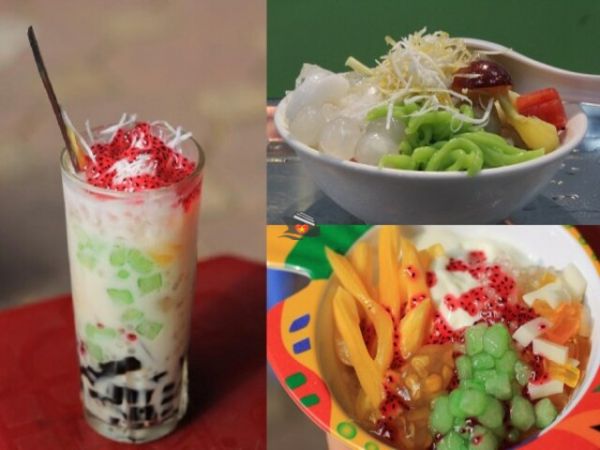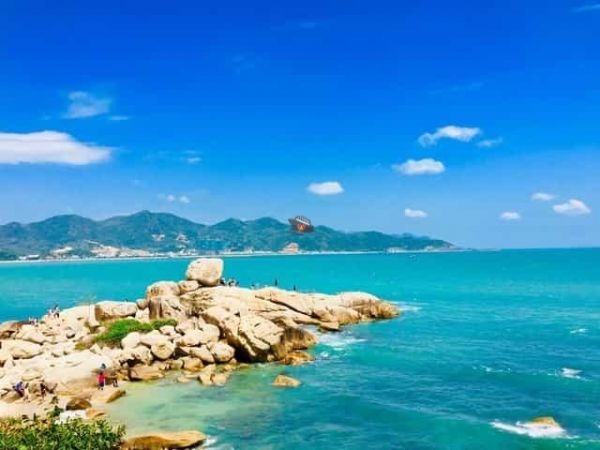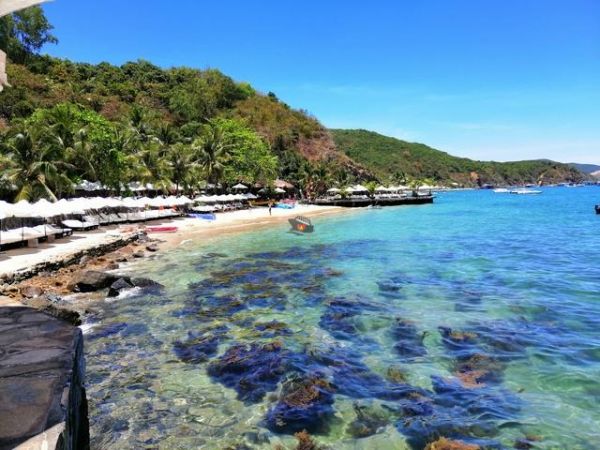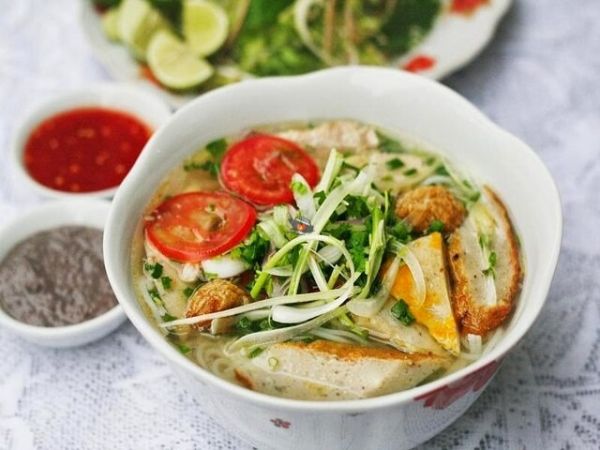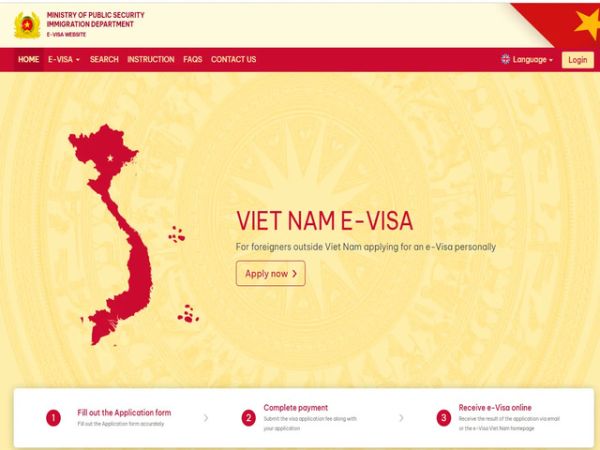VIETNAM MUSEUM OF ETHNOLOGY
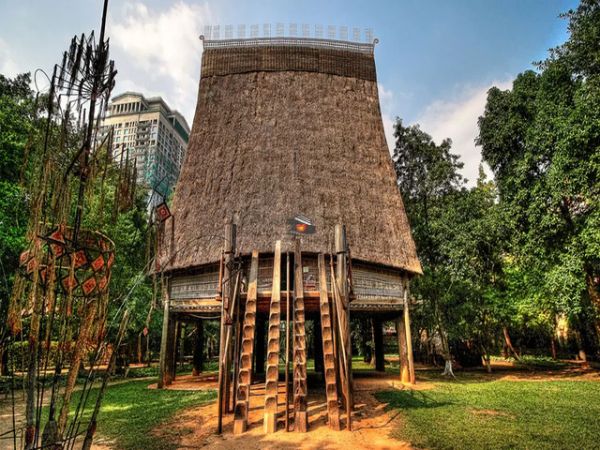
Vietnam Museum Of Ethnology. This fantastic collection on Vietnam's ethnic minorities includes beautifully presented tribal art, artifacts, and daily things collected from around the country, as well as samples of traditional village dwellings. Displays are well-labeled in Vietnamese, French, and English.
Vietnam Museum Of Ethnology Information:
Address: 1 Nguyen Van Huyen Street, Nghia Do Ward, Cau Giay District, Hanoi City
Hours of Operation: 8.30 - 17.30 everyday
Except Mondays and New Year's Holiday
Ticket and Fees: 40,000 VNĐ/pax
The Vietnam Museum of Ethnology is set on more than 4ha of land in Nguyen Van Huyen Street, Cau Giay District (approximately 8 kilometers from the city center). It was originally built around the end of 1987 and opened in 1997. The museum was constructed by architect Ha Duc Linh, a member of the Tay ethnic group, in the shape of a Dong Son Drum, with interior architecture by French architect Véronique Dollfus. There are three primary display areas: Bronze Drum, Outdoor, and Southeast Asia.
The History Of Vietnam Museum Of Ethnology:
The Vietnam Museum of Ethnology, operated by the Vietnam Academy of Social Sciences, is part of Vietnam's national museum system.
The Vietnam Museum of Ethnology performs a variety of functions, including research, collection, preservation, and restoration of ethnic objects and materials, as well as the organization of exhibitions, performances, and other forms of activities to introduce ethnic groups' cultures in Vietnam and other countries.
The establishment of the Vietnam Museum of Ethnology began in the 1980s when the country's socio-economic conditions remained severely poor in the postwar period. On October 24, 1995, the Prime Minister decided to create the Vietnam Museum of Ethnology.
The Museum was launched on November 12, 1997, at the French-speaking nations' summit in Hanoi, in the presence of Vietnamese Vice President Nguyen Thi Binh and French President Jacques Chirac.
The Museum covers about 4.5 hectares and features three exhibition areas.
The Bronze Drum, a two-story edifice that displays Vietnamese ethnic groupings, opened to the public on November 13, 1997.
The Architectural Garden, an outdoor installation spanning two hectares and erected between 1998 and 2006, showcases 10 folk architectural works from ten Vietnamese ethnic groups.
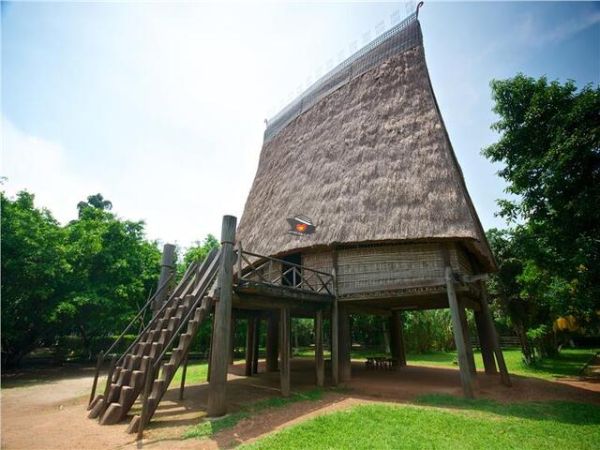
The Bronze Drum spans 2.500m² and has two levels. It is split into nine themes: Overview, Vietnamese - Muong language group, Thai - Kadai group, Mong - Dao group, Han - Tang group, Mon - Khmer group, Nam Dao group, Cham, Chinese, Khmer groups, and Exchanges and integration among ethnic groups.
The exterior display section will present you to characteristic home architectures of Vietnamese ethnic groups such as the E-De long house, Tay stilt house, Mong's Hinokin wooden roof, Kinh's tiled roof, Gia-Rai sepulcher, Rong house of Ba-Na ethnic group, and earth house of Ha Nhi ethnic group.
The Southeast Asia region aims to offer a general picture of the multi-culture of the Southeast Asian ethnic group via five themes: clothes, everyday living, social life, art of performance, and religion.
The Vietnam Museum of Ethnology, with 42000 color films and images, 2190 positive photographs, 273 recording and music cassettes, 373 video tapes, and 25 CD-Rom disks, is one of the most current, largest, and unquestionably intriguing museums in Hanoi and Vietnam. The Museum was founded on the understanding that Vietnam is a multiethnic country and that more emphasis should be devoted to promoting sociocultural variety.
Despite its remote location in comparison to other Hanoi museums, the Vietnam Museum of Ethnology is well worth a visit for those interested in learning about Vietnam's multicultural heritage, particularly those who do not have time to visit all of the remote areas where the majority of Vietnam's ethnic minorities live.

The Ethnology Museum in Hanoi is full of knowledge on traditional Vietnamese ways of life, from religious events to symbolic rites of all Vietnamese ethnic groups, creating a rich tapestry of Vietnam's cultural melting pot. Each category is represented by daily things in the exhibition hall, which also includes a research center, library, and theater.
The outdoor exhibition section showcases a range of Vietnamese homes as full-scale reproductions, with special emphasis on the various architectural styles placed amid the realistic and calm gardens. There are other leisure pastimes on show, like as traditional water puppet theater and calligraphy. The museum's long-term goal is to highlight Southeast Asia's many cultural practices and civilizations.
The Ethnic Museum in Hanoi houses about 15,000 objects, including pictures and other multimedia such as audiotapes. A virtual tour of its indoor display area is available, which includes the Viet, Muong, Tho, Chut, Tav, Thai, Ka Dai, H'Mong-Dao, Tang, San Dui, Ngai, Mon-Khmer, Nam-Dao, Cham, Hoa, and Khmer ethnic groups. There are valuable antiquities on show among ordinary items like pipes, baskets, and knives.
You can expect to see a wide range of interesting items on display at the Ethnology Museum Hanoi, including clothes, jewelry, and items related to weddings, funeral ceremonies, and other spiritual rituals, as well as an incomparable glimpse into their history, heritage, and cultural identity across 54 communities.
The outside area has a variety of traditional buildings, including a Tay stilt house and a Viet house, both with natural flora, divided by a small creek and accessible by short bridges. One of the museum's key strengths is its basic presentation of objects, allowing visitors to enjoy them without being overwhelmed by detail. The Ethnology Museum is appropriate for children, and all papers and exhibit signs have been translated into French and English.

How to get to the Vietnam Museum of Ethnology?
Travel to Hanoi:
To see the Vietnam Museum of Ethnology, you must first go to Hanoi. Currently, several international and local airlines arrive and depart from Hanoi's Noi Bai International Airport. This kind of transportation is ideal for visitors traveling from far distances. Tourists visiting Hanoi's bordering regions have additional options for transportation. To go to Hanoi, you can take vehicles, motorcycles, or cars.
Traveling to the museum:
Easily order a vehicle or cab in Hanoi using technology, including apps like Taxi It takes around 20 minutes to get 6.5 kilometers from Hanoi.
You may reach the museum via bus. There are several buses that run near the Museum of Ethnology, including busses 07, 12, 142, 38, 39, and 85. The museum's closest bus stop is Nghia Do Park stop, which is about a 3-minute walk away.
Rent a Car:
This is the most convenient route to visit the Vietnam Museum of Ethnology. This allows you to visit more diverse areas in Hanoi.

Discovering the splendor of the Vietnam Museum of Ethnology Hanoi:
The museum has three notable display areas: the Bronze Drum Building, the Architectural Garden, and the Kite Building. There are also numerous unique experiences that you should not miss.
- The Bronze Drum Building embodies national cultural identity:
The Bronze Drum Building, a two-storey structure, is one of two display buildings at the museum. Architect Ha Duc Linh (Tay ethnic group) created the structure, which was inspired by the Dong Son civilization's bronze drums.
The Bronze Drum Building, with a total display space of up to 2,000m2, debuted in November 1997. With around 15,000 artifacts and over 42,000 videos and audiotapes. The Bronze Drum display section is a significant part of the museum. It reflects the distinct cultures of 54 Vietnamese ethnic groups.
The timetable for seeing the Bronze Drum Building is divided into nine segments. Which are grouped in an intriguing manner. There is also space to hold temporary exhibitions.
- The beautifully designed Kite Building:
Kite, a four-storey structure, was erected in June 2007 and inaugurated in 2013. The Kite Building showcases non-Vietnamese citizens, such as Southeast Asian ethnic groups.
This location was created by architects from Hanoi University of Civil Engineering and is styled after a kite, a common traditional cultural characteristic in Southeast Asia.
The building's four recurring themes are Southeast Asian Culture, A Glimpse of Asia, Indonesian Glass Painting, and Around the World. Furthermore, there is a temporary display space, a hall, a movie room, and educational programs.
- The Architectural Garden is full of luscious green:
The Architectural Garden, an outdoor display space, was developed between 1998 and 2006 and spans approximately 2 hectares. It introduces ten distinctive folk architecture masterpieces from ten Vietnamese ethnic groupings. Examples include the Cham house campus, Bana Rong house, Vietnamese home, Giarai tomb house, Ede Dai house, Cotu tomb house, Tay stilt house, Hmong ground floor house, Ha Nhi rammed earth house, and Dao half-floor, half-ground floor house.
All elements have been expertly restored, including the entry gate, water well, and steps. It provides a dynamic space that reflects the qualities of each ethnic community.
The Architectural Garden is filled with a variety of green trees and cool artificial waterways. This location showcases the variety and depth of Vietnamese culture.
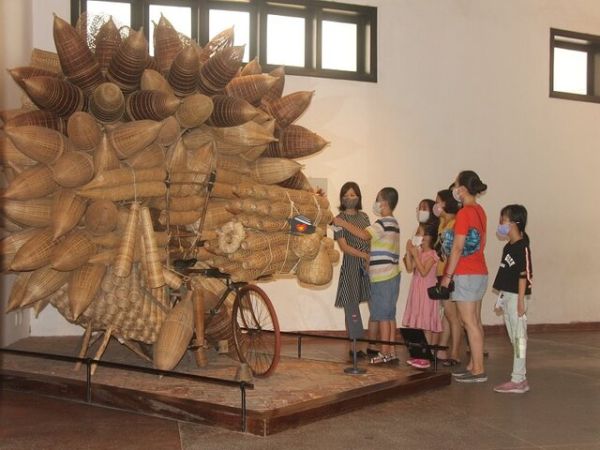
Things to do at the Vietnam Museum Of Ethnology:
- Participating in cultural events and appealing to traditional games:
The museum routinely conducts intangible cultural performances for events such as the Mid-Autumn Festival, Lunar New Year, International Children's Day, and so on. These activities always draw a significant number of people to participate and experience.
Visitors to the museum can also learn about handicraft communities. This is an opportunity to admire the creativity and skill of artists and craftspeople. When appreciating them, consider weaving mats, brocade, bamboo, and rattan, manufacturing ceramics, drilling gun barrels, making do paper, making folk toys, and printing Dong Ho artwork.
The Vietnam Museum of Ethnology is more than just a destination to discover distinct cultural beauties. It also provides tourists with a variety of interesting folk activities, such as tossing con, swinging, strolling on the bridge, balancing, and so on. These are all unique experiences that should not be missed when visiting the Vietnam Museum of Ethnology.
Water puppetry's topic is based on stories from ethnic groups' daily lives and activities. It is reconstructed using vibrant and appealing water puppetry pictures. The ticket is 90,000 VND for adults and 70,000 VND for children. The concert will be available free of charge in the morning.
Bac Ninh Quan Ho folk music: You may listen to Quan Ho folk songs and interact with artists. If you are confident in your singing abilities, strive to showcase them at these concerts. It will undoubtedly leave you with many wonderful and lasting memories.

Tips for visiting the Vietnam Museum of Ethnology:
- To have the easiest visit to the Museum of Ethnology, you should consider the following issues:
- Limit the size of organizing groups to ensure the tour's quality.
- The museum offers tour guides in many languages, including Vietnamese, English, and French for various locations. As a result, you can request a guide on-site, purchase tickets at the gate, or pre-register before visiting the museum.
- When visiting, do not bring any weapons, flammable, explosive, or hazardous material.
- Always carry cash and valuables with you.
- Maintain public hygiene and avoid producing noise and chaos.
- Do not bring food or beverages inside the museum.
- Avoid touching, moving, and sitting on the exhibits.
- Please do not bring dogs inside the museum.
The Vietnam Museum of Ethnology exposes and promotes the distinctive culture of Vietnam's 54 ethnic groups via exhibitions and a variety of engaging activities. It encourages national pride via culture and tradition.
Hotline/ WhatsApp: +847-6666-0606
Email: info@friendlytravel.vn






